[Apple II, Rockroy Inc.]
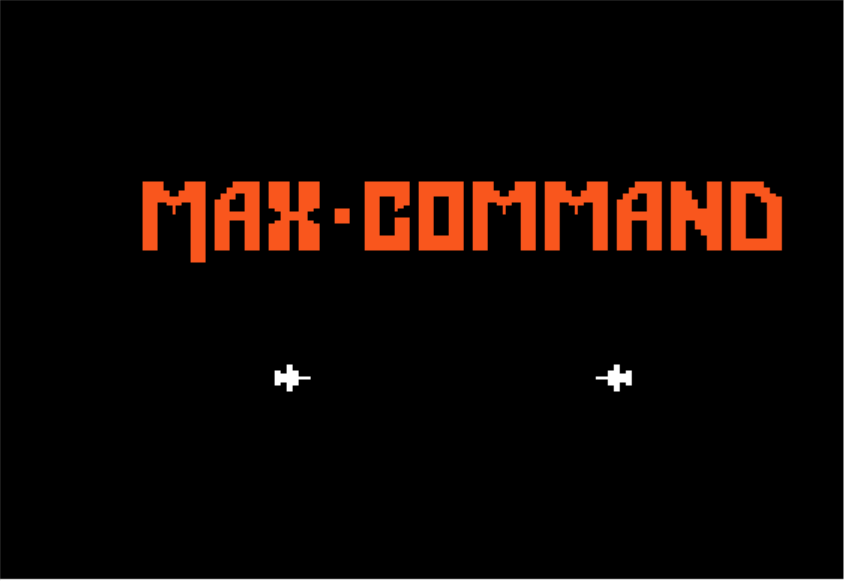
What if we made a game of chess… with GUNS ?
Someone at Rockroy, probably
Max Command is the second and last game by Rockroy Inc., an Arizona company founded around 1981 by Paul Mason, Louis R. Mayne, and Robert E. Siegling. The company made an unexpected combination of games and diskette casings. I don’t know about the diskette casings, but their first game, Conglomerates Collide, was a critically acclaimed business simulation. But I must end the introduction here because that’s all I know about Rockroy, and because I just received urgent instructions.
It looks like we are finally moving into Datastan with full force. Command authorized me to deploy our secret weapon, the “Max-One”, so we are going all in.
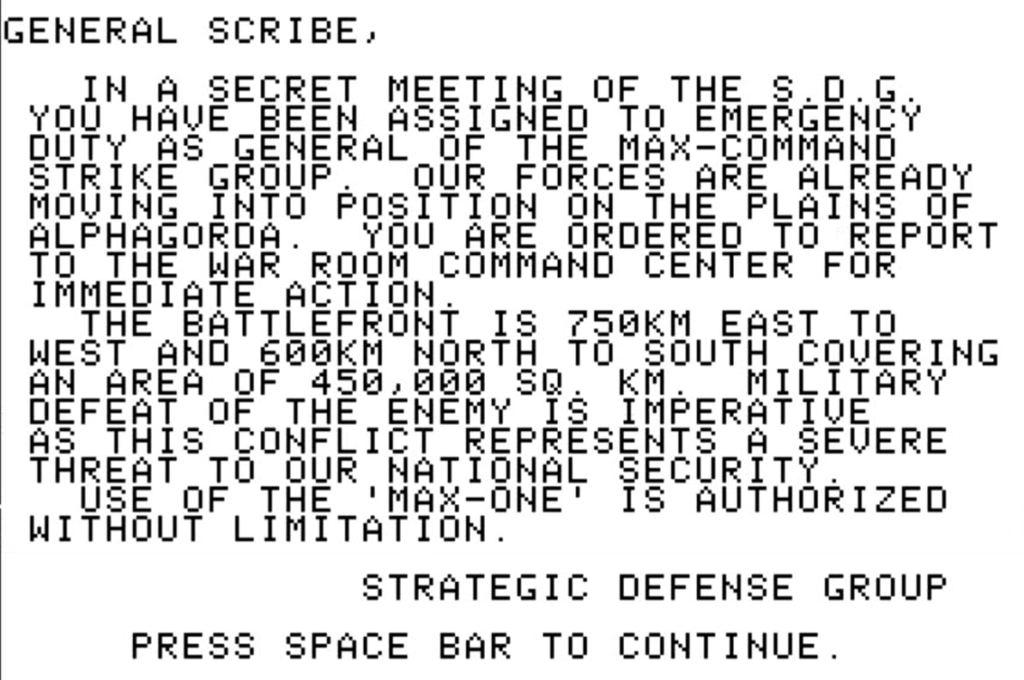
We have been studying the enemy’s comms, and it looks like they have already been informed of our decision. They’ll be prepared !
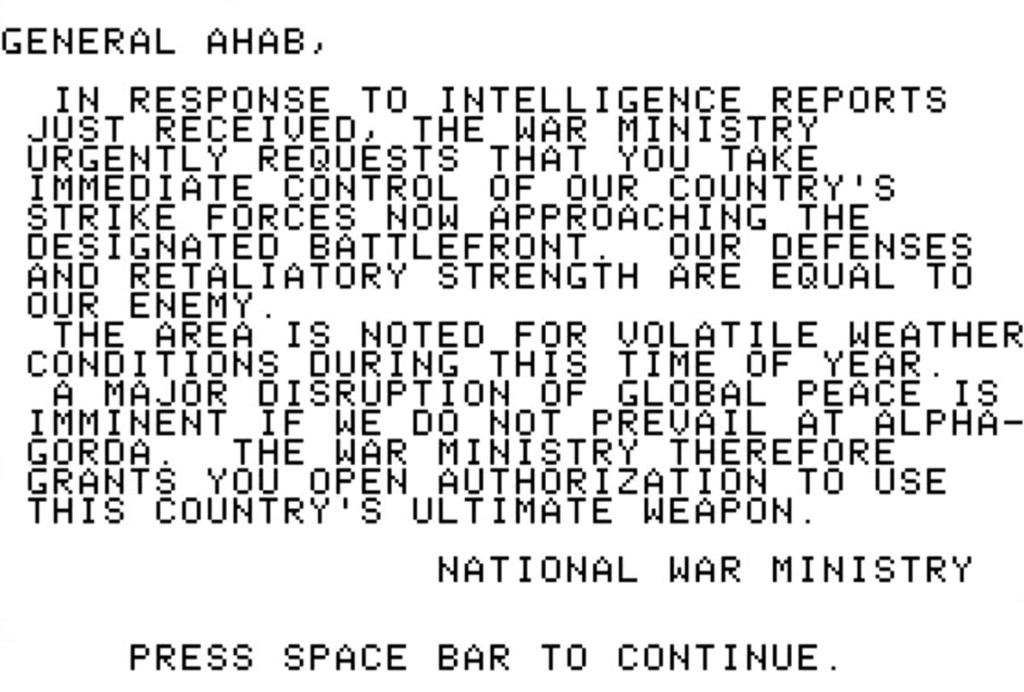
Taking command of my forces, I scrutinize the satellite images :
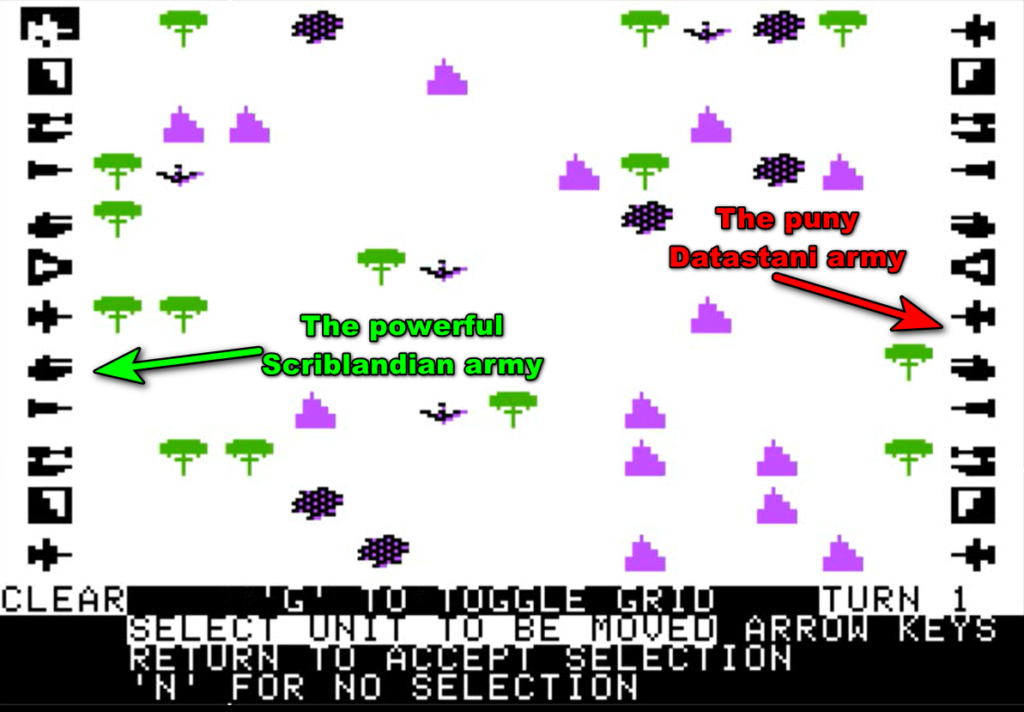
Well, it looks like they already deployed !
Without me having any input, my Max-One was deployed in the middle, with a mix of tanks, artillery, infantry and planes on the flank. The Datastani on the other … wait… how come they also have one of our top-secret Max-One in their own center ? Is it actually the Max-Two ? Someone has a lot of explaining to do.
Both sides have 11 other units of 5 different categories :

In Max-Command each player can move one unit and shoot with one unit (the same or another) at a target in range every turn. Shots never miss and always destroy their target.
- Tanks, artillery and missiles are the standard units. Their speed + range combined is always 5,
- Planes have a speed of 5, so they can start out of range of the previous standard units, and still destroy them. Unfortunately for them, with an attack range of 1, they are likely to be destroyed the following turn,
- Armoured infantry also has a range of only 1 for a speed of 3, but unlike all the other units it can only be destroyed at a range of one tile, or by the Max-One,
- As for the Max-One, it is as slow as artillery (speed = 1) and has the same range (4), but whatever tile it hits is devastated and becomes blocked terrain.
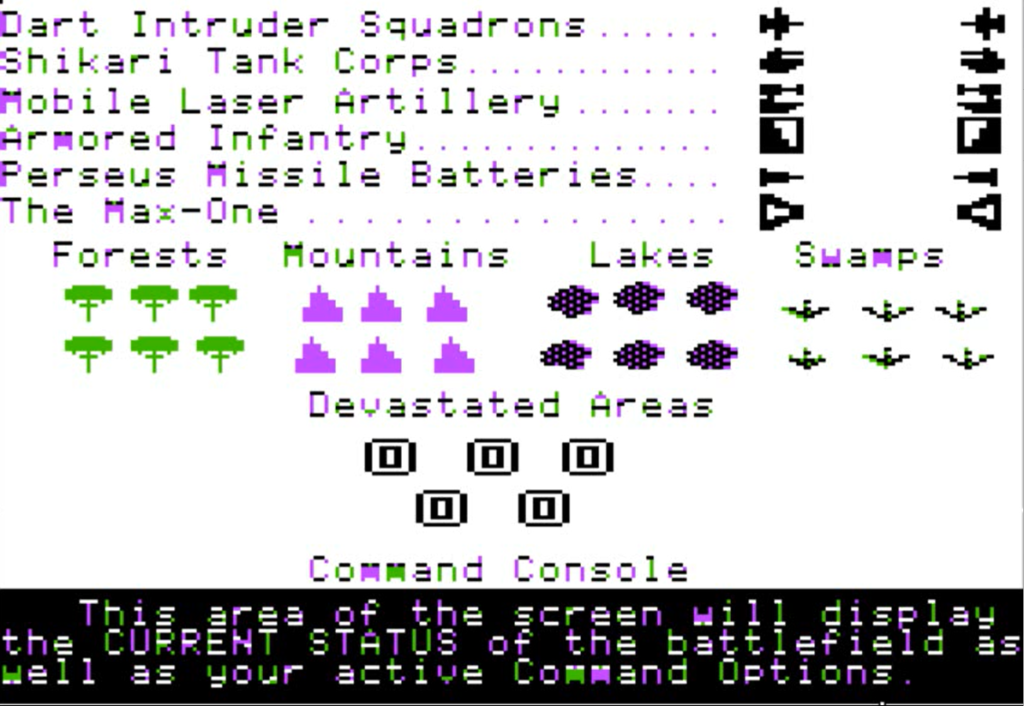
I spend my first turns advancing my Max-One, to which the Datastani react by advancing their own Max-One.
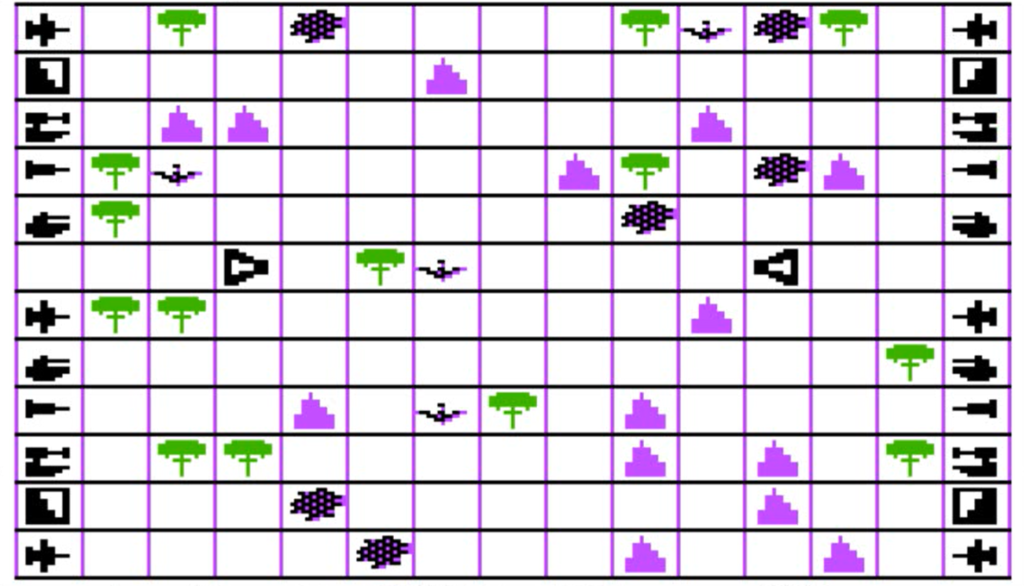
Copying the other side as the second player is rarely a great strategy. My planes moving 5 tiles by 5 tiles can easily jump on the opposing Max-One while never being in range of its missiles. That’s exactly what I order one of them to do :
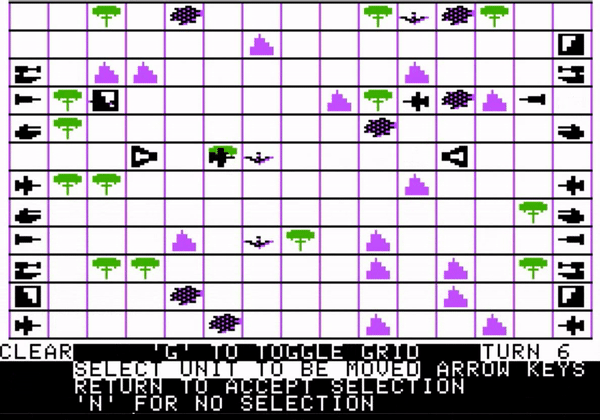
I lost my own plane, but that’s still an outstanding trade : my Max-One is now Max-Unique ! The Datastani are not really great strategists.
I spend the rest of early game trading my land vehicles for their planes, so I don’t have to be worried about surprise raids :
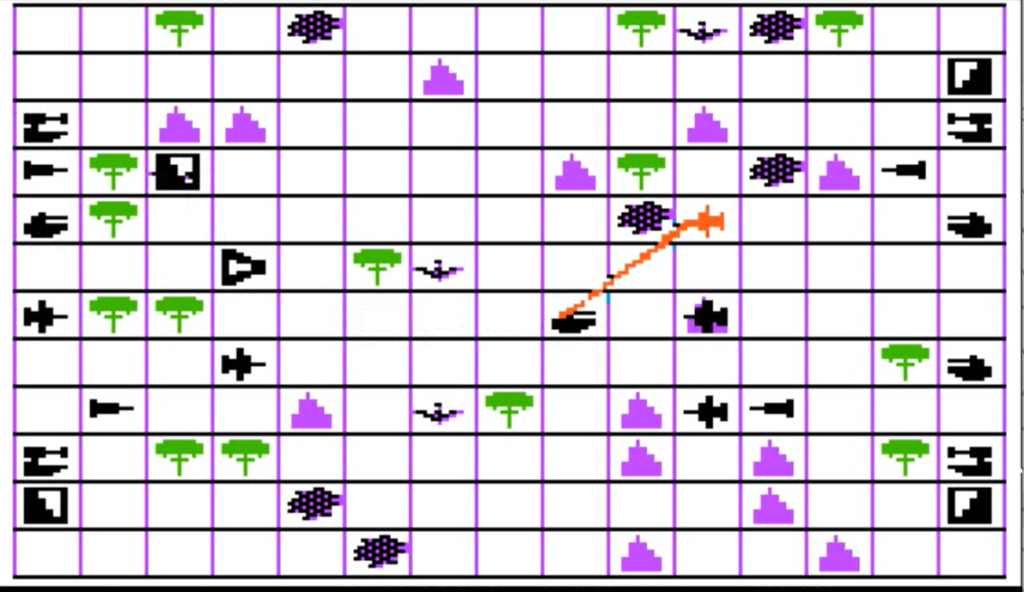
I destroy 2 planes like this – the third one attacks before I do :
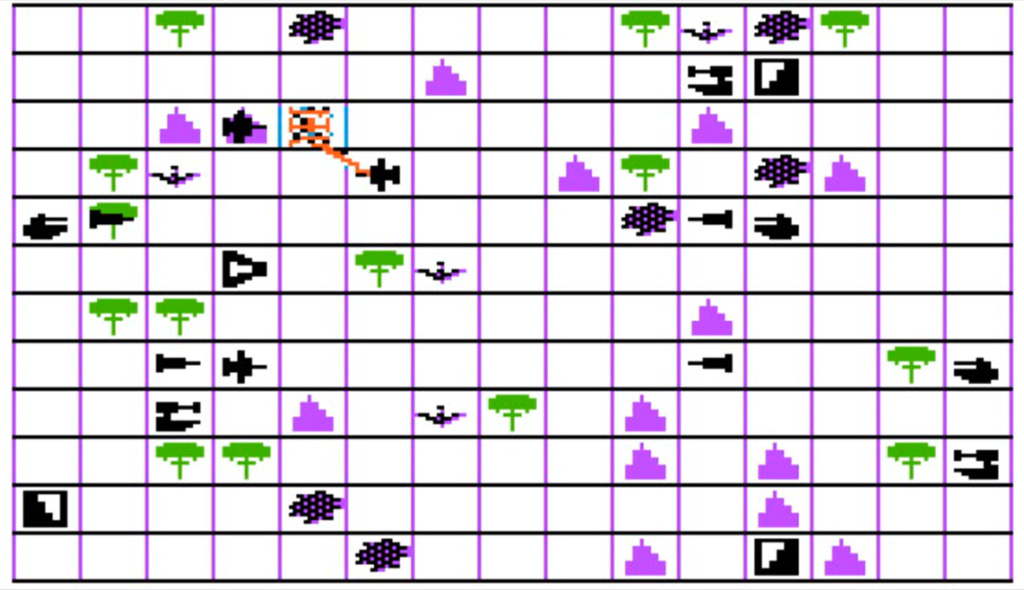
Just as I am preparing to annihilate it, the weather changes :
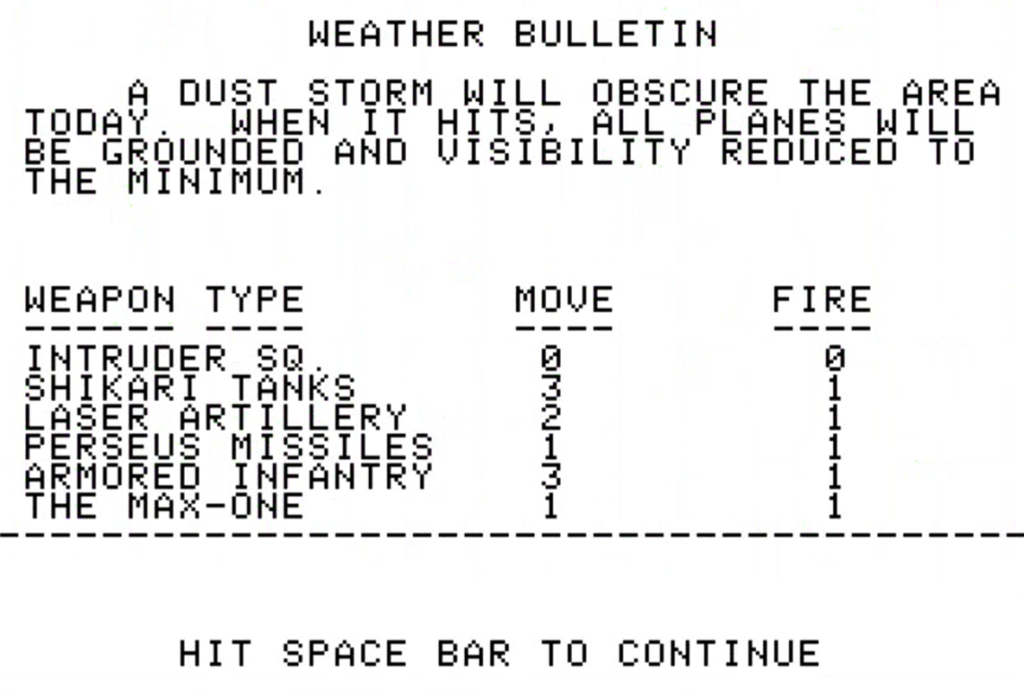
In Max-Command, the weather changes regularly – though only for one turn (both players can play once with the new weather). In this case, due to the storm, all units’ max combat range drops to 1. I must move my Max-One to destroy the plane. Not a problem : doing so will destroy the last Datastani plane, so my Max-One will still be safe after repositioning.
Eventually, the front stabilizes with a death zone of 5 tiles between me and the Datastani :
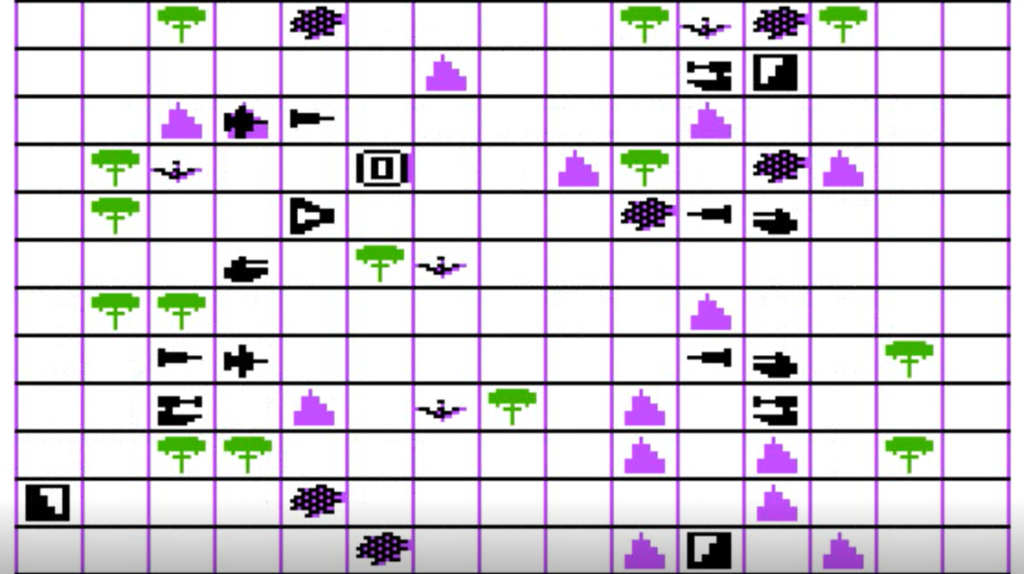
The stalemate is broken by a hailstorm : only tanks and infantry can move or shoot !
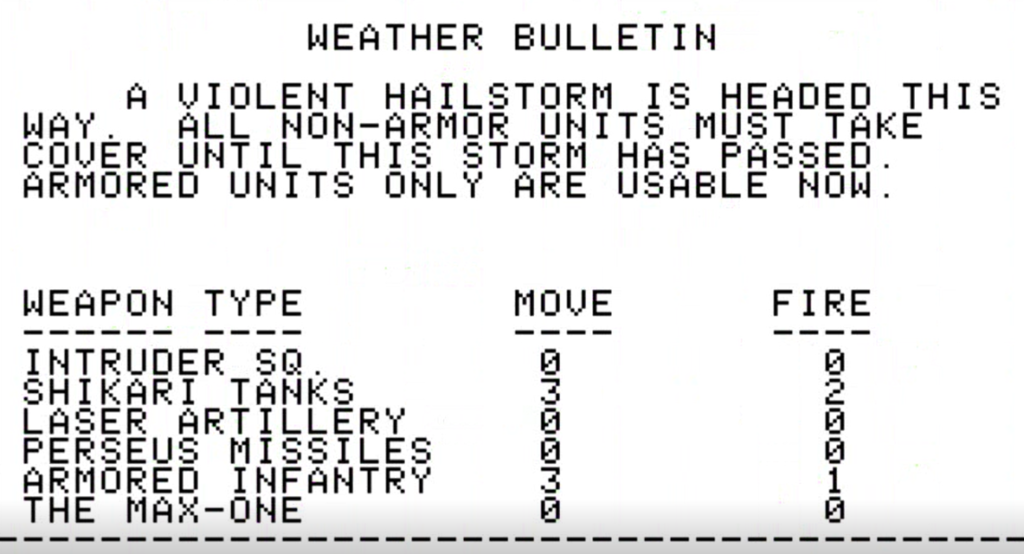
I use it to move a tank forward, and trade it for an enemy missile unit. I then trade my two planes for the remaining missile unit and one enemy tank.
To destroy my second plane, my opponent makes another weird mistake :
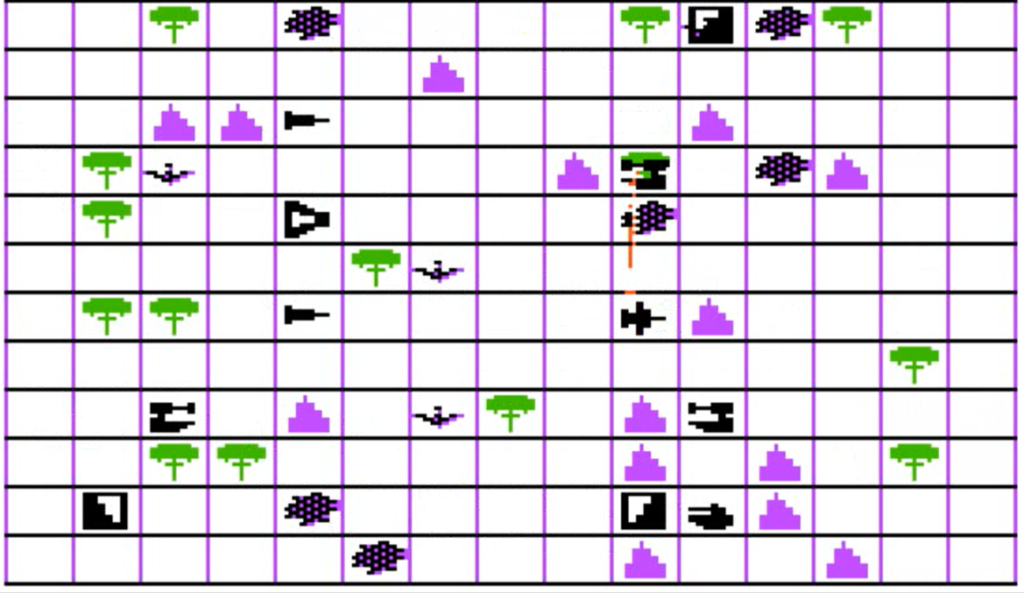
The datastani artillery moved 5 tiles away from my units, which means I can move forward and shoot it. That’s a free kill.
After that, I just have to trade units to remove the remaining datastani tank and artillery :
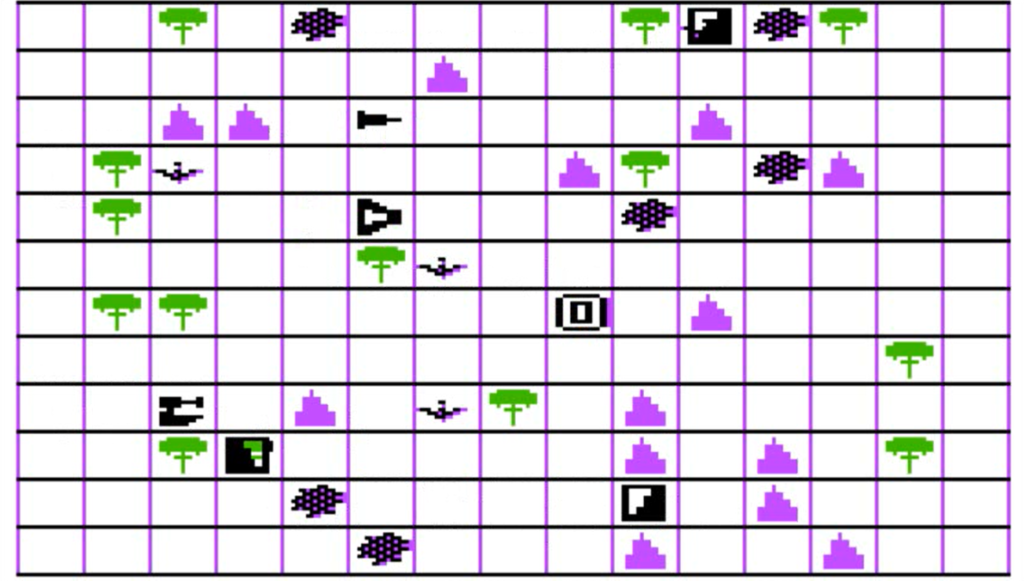
And finally, in the final turns, I can use the superior range of my Max-One to annihilate the enemy infantry. I won ! Easily !
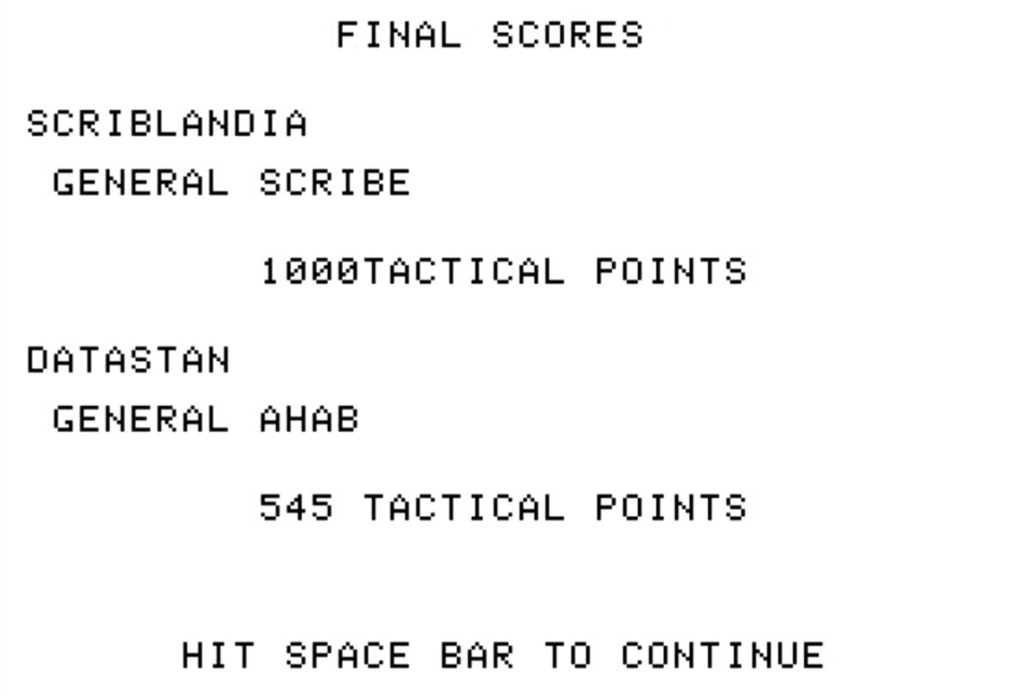
It looks like I even confirmed my trial period as Commander-in-Chief :
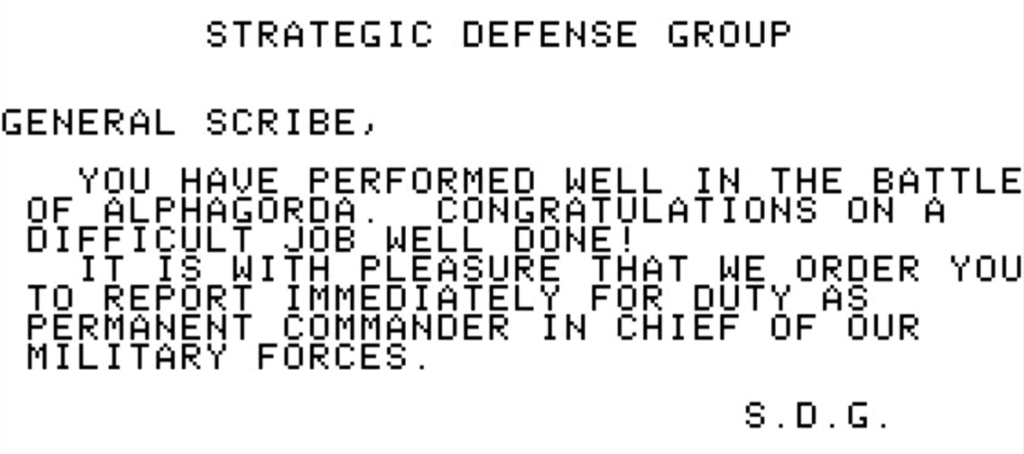
Rating & Review
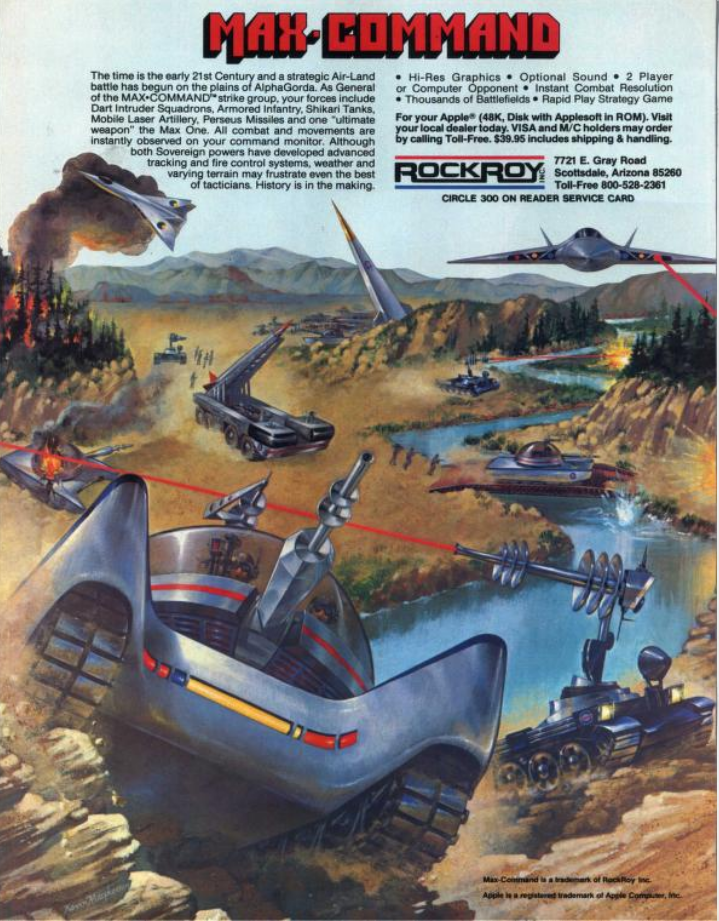
MAX-Command by Rockroy Inc, USA
First release : December 1982 on Apple II
Tested on : Apple II emulator
Total time tested : 2 hours
Average duration of a battle : 20 minutes
Complexity: Trivial (0/5)
Would recommend to a modern player : No
Would recommend to a designer : No
Final Rating : Totally obsolete
Ranking at the time of review : 57/71
A. Immersion
Very poor. There is some attempt to create a context, but it feels flat and just makes it longer to launch the game.
B. UI, Clarity of rules and outcomes
Good. The game is trivial to play, the manual is clear and you can correct mistakes / cancel movements very easily.
C. Systems
Very poor. I like the idea of a deterministic tactical game with the weather changing the ruleset from time to time, but Rockroy did not transform this good idea into a great game :
- Terrain feels like an afterthought. Mountains block movement and forests / swamps slow down units but their impact is marginal : terrain is sparse enough it can be avoided by moving diagonally for no extra cost, planes fly above it, slow units (missiles and Max-One) are not slowed down further, …
- The weather only changes for one full turn (both players playing once), so instead of having to change your strategy to adjust to the new condition, you just prepare your troops and then wait for that specific weather event that will allow you to take a small advantage.
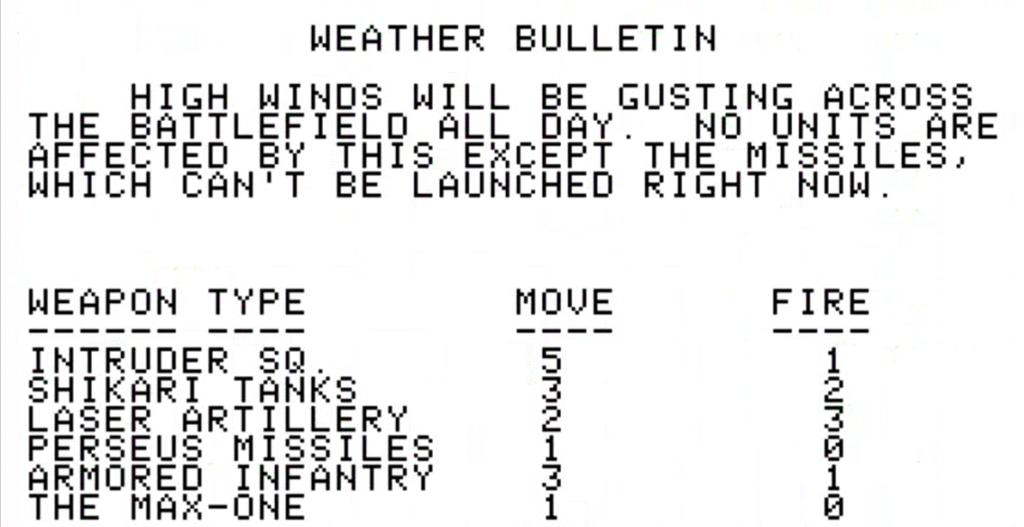
Worse, the weather always changes during the turn of the first player, which means only this player can leverage it (for instance approaching if the attack range of all units becomes 1).
- Units don’t feel very different, or rather different in a useful way – except for the planes. Infantry feels weaker (you will be happy to trade it for any other unit), and the rest always have movement + range equal to 5.
In practice, in most games, both sides line up their troops 5 tiles apart (6 if there are still some planes around) and then the first player waits for the weather to change.
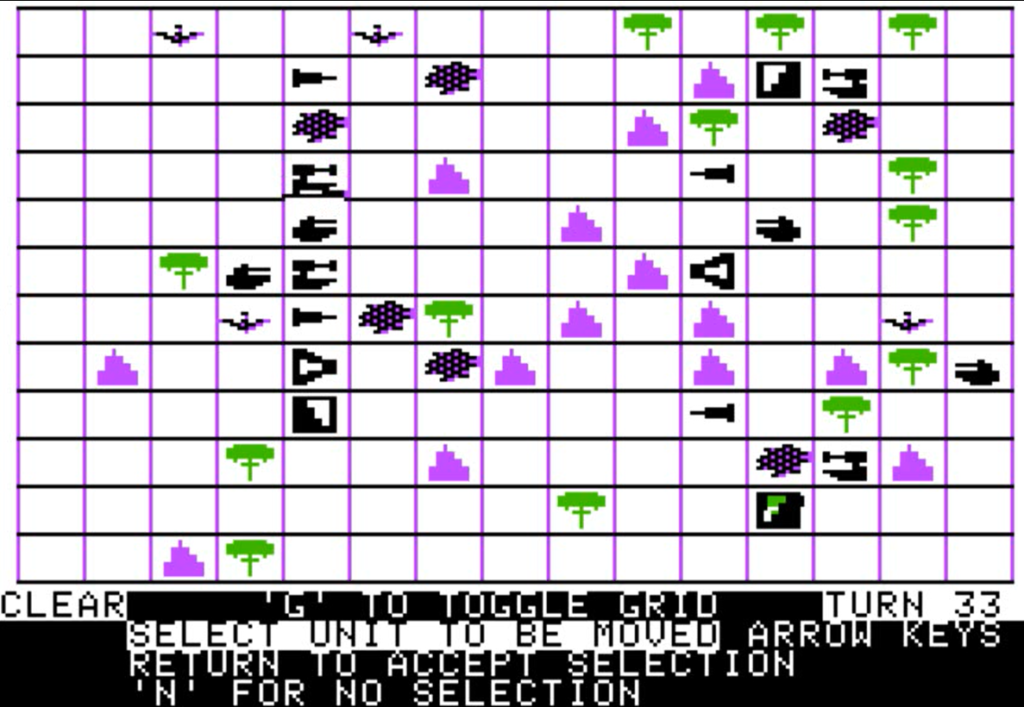
The game could have been absolutely great if :
- the terrain had been better distributed (eg with large patches of forests here, hilly terrain there) and had given stronger advantages (eg : “units in forest cannot be attacked at range“, “units at the top of a hill have +1 range“),
- If the units had been more differentiated (eg : “missiles and artillery cannot move and shoot“),
- Weather had been predictable a few turns in advance and stable (eg “for the next 4 turns, missiles won’t work – how can I exploit this ?”).
As it is, this “ranged chess” does not work.
D. Scenario design and balancing
Terrible. There are 3 types of games (full battle like in my AAR, but also “time limit” and “point limit”) ; in my experience they play exactly the same. The terrain is randomized but it has no significant role and the first player has a huge advantage.
The AI is absolutely pathetic and will accept unfavourable trades. That’s a bit of a problem to enjoy the game : imagine an AI in chess that would gladly trade a queen for a bishop and then its rooks for your pawns. I lost none of my 6 battles against the computer.
E. Did I make interesting decisions ?
No. The game is too easy for that.
F. Final rating
Totally obsolete.
Contemporary Reviews
I could only find one review for Max-Command, in the April 1983 issue of Softtalk, even then the review was mostly descriptive, concluding : “Max-Command is a good strategy game for those who prefer rigid, symbolic levels of computerized conflict.”
Even though the game managed to be translated into French for the French Canadian market, I don’t know how successful it was. It was the last game by Rockroy so probably not that much.

I would like to thank commenter Porkbelly for sending me the manual of this game. Also, unrelated, I have removed Galactic Taipan from my list, as it is a trading game à la Galactic Trader, with occasional pirates.